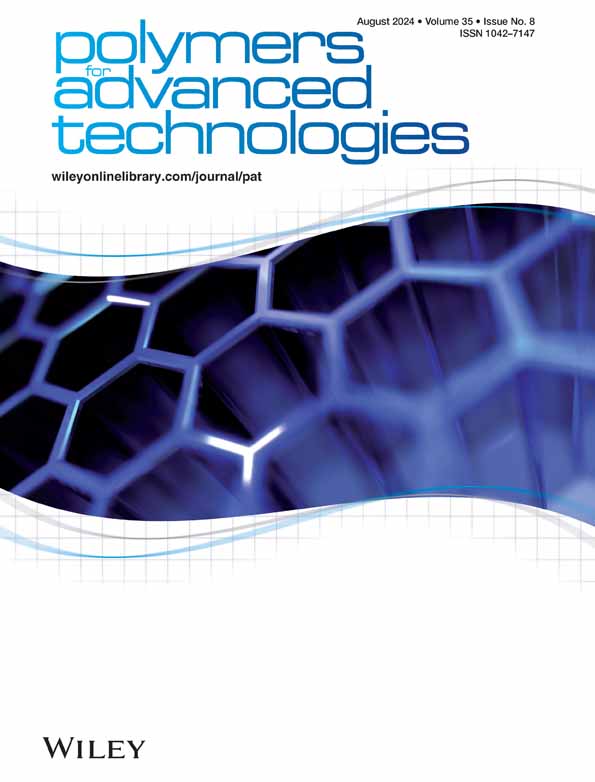High‐performance shape memory characteristics by integrating urea linkages into the polyurethane elastomer
IF 3.4
4区 工程技术
Q2 POLYMER SCIENCE
引用次数: 0
Abstract
Shape memory polymers have been widely researched to develop multifunctional materials that respond smartly to external stimulations and programmed signals. Among them, shape memory polyurethane (SMPU) is drawing great attention owing to its highly tunable properties and ease of integrating new functions. However, the effect of urea bonds on SMPU elastomers has rarely been investigated because of the extreme reactivity of amine crosslinkers. In this study, we used diethanolamine (DEOA), which contains a secondary amine, as the crosslinker for SMPU synthesis. Unlike other crosslinkers containing primary amines, they can form urea bonds in a more gentle manner. The urea bonds reinforce the intermolecular interactions between the hard segments with strong hydrogen bonding, thus increasing the phase separation and degree of crystallization. Consequently, the urea‐containing SMPU exhibits improved mechanical strength and shape memory abilities for both fixing and recovery. Moreover, the transcarbamoylation reaction, which enables the reconfiguration of the original shape, is observed. The introduction of the urea bonds into the SMPU elastomer can be beneficial in achieving flawless shape memory performances in various sensitive applications.通过在聚氨酯弹性体中加入尿素链节实现高性能形状记忆特性
人们一直在广泛研究形状记忆聚合物,以开发能对外界刺激和程序信号做出智能响应的多功能材料。其中,形状记忆聚氨酯(SMPU)因其高度可调的特性和易于集成新功能而备受关注。然而,由于胺交联剂具有极强的反应性,人们很少研究脲键对 SMPU 弹性体的影响。在本研究中,我们使用含有仲胺的二乙醇胺(DEOA)作为合成 SMPU 的交联剂。与其他含有伯胺的交联剂不同,它们能以更温和的方式形成脲键。脲键以强氢键加强了硬片段之间的分子间相互作用,从而增加了相分离和结晶度。因此,含尿素的 SMPU 在固定和复原方面都具有更好的机械强度和形状记忆能力。此外,还观察到了转氨基甲酰化反应,该反应可使原始形状重新配置。在 SMPU 弹性体中引入脲键有利于在各种敏感应用中实现完美的形状记忆性能。
本文章由计算机程序翻译,如有差异,请以英文原文为准。
求助全文
约1分钟内获得全文
求助全文
来源期刊

Polymers for Advanced Technologies
工程技术-高分子科学
CiteScore
6.20
自引率
5.90%
发文量
337
审稿时长
2.1 months
期刊介绍:
Polymers for Advanced Technologies is published in response to recent significant changes in the patterns of materials research and development. Worldwide attention has been focused on the critical importance of materials in the creation of new devices and systems. It is now recognized that materials are often the limiting factor in bringing a new technical concept to fruition and that polymers are often the materials of choice in these demanding applications. A significant portion of the polymer research ongoing in the world is directly or indirectly related to the solution of complex, interdisciplinary problems whose successful resolution is necessary for achievement of broad system objectives.
Polymers for Advanced Technologies is focused to the interest of scientists and engineers from academia and industry who are participating in these new areas of polymer research and development. It is the intent of this journal to impact the polymer related advanced technologies to meet the challenge of the twenty-first century.
Polymers for Advanced Technologies aims at encouraging innovation, invention, imagination and creativity by providing a broad interdisciplinary platform for the presentation of new research and development concepts, theories and results which reflect the changing image and pace of modern polymer science and technology.
Polymers for Advanced Technologies aims at becoming the central organ of the new multi-disciplinary polymer oriented materials science of the highest scientific standards. It will publish original research papers on finished studies; communications limited to five typewritten pages plus three illustrations, containing experimental details; review articles of up to 40 pages; letters to the editor and book reviews. Review articles will normally be published by invitation. The Editor-in-Chief welcomes suggestions for reviews.
 求助内容:
求助内容: 应助结果提醒方式:
应助结果提醒方式:


